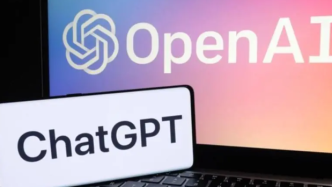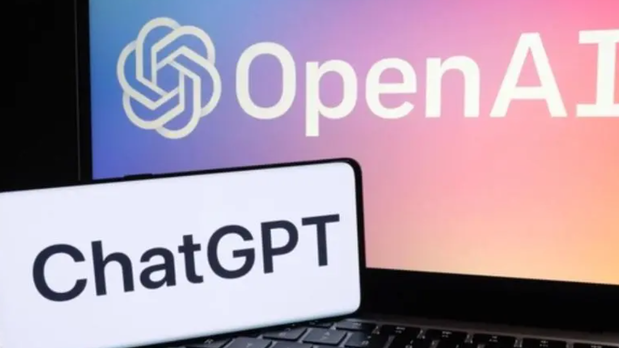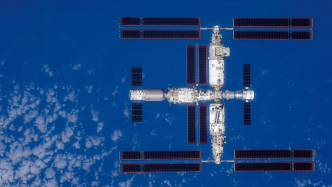

Recently, the artificial intelligence program ChatGPT has become popular on the Internet because of its "knowledgeable" and "answering questions". The generative AI represented by ChatGPT has powerful content generation capabilities and a level of "smartness" that is close to that of humans. Its application in the military field is bound to have an impact on future wars.
Significantly improves battlefield awareness. In future wars, all kinds of new rapid-kill weapons will further accelerate the pace of the battlefield, requiring continuous improvement of battlefield situational awareness, thereby supporting rapid decision-making that adapts to the needs of the battlefield. In the battlefield space full of "fog", in the face of massive multi-source, complex and heterogeneous and rapidly growing battlefield situation data, human perception speed and processing ability seem a bit "slow". The visual large model architecture introduced in recent years has achieved breakthroughs in many fields such as image classification, object detection, semantic segmentation, pose estimation, image editing, and remote sensing image interpretation through unsupervised pre-training and reinforcement learning paradigms of human feedback. Can significantly improve battlefield awareness. Smart weapons embedded with visual large models can accurately identify and distinguish the primary and secondary targets, authenticity and authenticity of strike targets through the visual system, and can quickly extract and generate high-value intelligence from massive multi-modal data, reduce the cognitive load of combatants, and form Comprehensive, timely and accurate judgment on the situation. Using the perception advantages of generative AI to achieve precise positioning of key nodes may be a prerequisite for launching combat operations in the future.
Significantly promote human-computer interaction. Human-computer interaction allows machines to "listen" and understand human language, "see" human actions and expressions, "understand" human emotions and intentions, and present the calculation process and results in a way that is easy for humans to understand. Large language models can not only perform well in text understanding scenarios such as sentiment analysis, speech recognition, and information extraction, but are also suitable for visualization generation scenarios of battlefield information systems such as picture description generation, manuscript generation, and dialogue generation. If it is embedded in the integrated joint combat system and continues to iteratively evolve, it can be used for more complex tasks such as scenario writing, combat plan generation, and exercise result commentary. In future wars, it may reshape the command and decision-making process. Deeply embedding ChatGPT-like generative AI applications into the command information system can enable intelligent equipment to "understand" instructions, and accurately understand and analyze the commander's combat needs through the man-machine dialogue between the commander and the battlefield information system, and generate actions based on this The reference plan provides a new means for the rapid and reasonable allocation of combat forces in future wars.
Boost the autonomy of command and decision-making. Informatized and intelligent warfare, with diverse forces participating in the battle, various combat styles, and changing battlefield situations, commanders face the "bottleneck" of insufficient intelligence in effectively commanding the war. become a new choice. Although judging from the current technical level, ChatGPT-like generative AI applications are still unable to perform operations such as machine control, group collaboration, and dynamic scheduling. However, its powerful parallel processing capability can handle thousands of tasks at the same time. It is suitable for fusion control of manned/unmanned platforms, generation of control algorithms, optimization of group behavior, and can fully support "bee swarms", "fish swarms" and "wolves" operations Multi-agent. The command and control system based on the large decision-making model can give full play to the advantages of both the human brain and artificial intelligence, and realize the leap from intelligent prediction to intelligent decision-making, and from controlling single-agent to multi-agent. On the future battlefield, embedding generative AI into unmanned combat platforms can innovate new paradigms of military operations and greatly improve combat effectiveness.
A new model of logistics support was born. From the perspective of scientific and technological development, military confrontation is increasingly expanding to all dimensions of physical domain, information domain and cognitive domain, and the combat space is extending to extremely high, extremely far, and extremely deep in all directions, and the corresponding logistics support tasks have become more diverse. complex. On the future battlefield, multi-task general-purpose large models will be integrated into unmanned combat platforms and various support systems. People, equipment, and objects will be ubiquitously interconnected, and various combat and support entities will be organically integrated. The logistics support system realizes the intelligent matching of people and materials, materials and equipment, materials and troops, materials and regions through in-depth learning and analysis of big data such as the quantity, time, and maintenance status of stored materials, and automatically predicts material demand and matches the best Carriers, formulate optimal transportation plans, and solve problems in the battlefield logistics supply chain in a timely manner. Especially in the face of extreme combat support that is difficult for personnel to reach such as complex terrain, contaminated areas, and fire control areas, on the basis of a large number of pre-training samples for special missions, generative AI can realize changes in demand perception, resource allocation, and action control. Assign tasks, independently plan routes, and autonomously navigate and locate, and deliver the support materials directly and accurately to the support objects in a "point-to-point" manner, realizing intelligent support.


